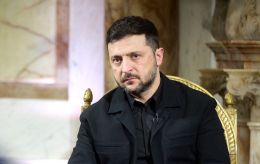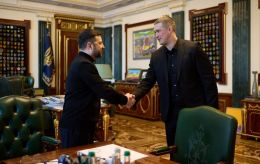Cautious skepticism: Can Zelenskyy’s victory plan overcome US doubts and get 'green light'
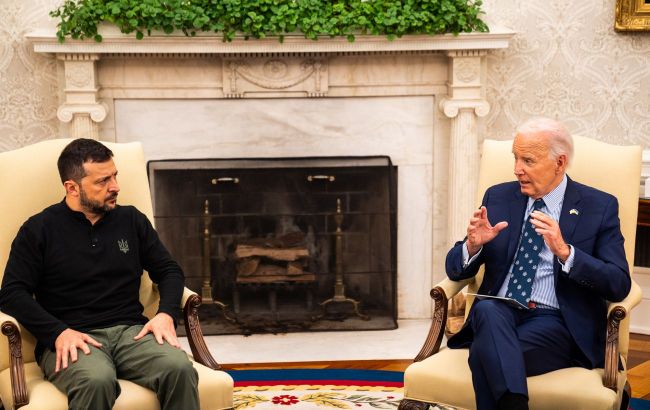 Volodymyr Zelenskyy and Joe Biden (photo: Getty Images)
Volodymyr Zelenskyy and Joe Biden (photo: Getty Images)
During his visit to the US, President Volodymyr Zelenskyy presented his victory plan for Ukraine to key American officials and politicians, as well as some leaders of other countries. How the plan was received in the US and the challenges faced by the Ukrainian delegation read below.
Contents
- Victory plan for Biden and Harris
- Permission for strikes deep into Russia
- Meetings with Scholz and Modi
- Victory plan for Trump
Not everything went according to plan during the Ukrainian president's visit to the US. From the very first days of the trip, the Ukrainian delegation faced criticism from half of the American political establishment — the Republican Party. This significantly affected the main goal of the visit: to present Ukraine's Victory Plan to current and future American leadership. It was only partially successful.
American leaders spoke very little and generally about the details of the negotiations and their views on Zelenskyy's plan. However, administration representatives were much more candid with American media on condition of anonymity, providing a clearer picture of their sentiments.
Victory plan for Biden and Harris
Communicating Zelenskyy's plan to the current US administration — President Joe Biden and Vice President Kamala Harris — was not easy. Even in the early days of Zelenskyy's visit, the media did not show much enthusiasm for the Victory Plan. According to The Wall Street Journal, US officials expressed concerns that Zelenskyy's plan resembled more of a request for additional weapons than a full-fledged strategy.
A Bloomberg source familiar with Zelenskyy’s negotiations with other world leaders described the Victory Plan as simply a "wish list" that the Ukrainian president once again brought with him.
According to The New York Times, some American and European officials familiar with Zelenskyy's plan stated that they wanted the Ukrainian president to stop prioritizing short-term requests for specific weapons and instead focus on long-term strategic solutions to end the war.
Against this backdrop, the meeting between the presidents of Ukraine and the US took place on September 26.
The Office of the President of Ukraine merely reported the meeting without providing details: "We discussed ways to strengthen the Plan and coordinated our positions, views, and approaches. We instructed our teams to hold consultations on the next steps."
One of the topics of the conversation and a component of the plan was Biden's agreement to allow Ukraine to join NATO. However, there has been little progress in this area. According to The New York Times, Biden vaguely promised that Ukraine would be allowed to join the Alliance someday due to fears of dragging NATO into a direct conflict with Russia.
Similarly, Harris did not clarify her stance on Ukraine after reviewing the plan. During the meeting, she assured Zelenskyy that her support for Ukraine’s defense against Russian aggression is unwavering. At the same time, she did not miss the opportunity to indirectly criticize Trump, saying that there are those "some in my country who would instead force Ukraine to give up large parts of its sovereign territory, who would demand that Ukraine accept neutrality, and would require Ukraine to forgo security relationships with other nations."
Permission for strikes deep into Russia
Another important issue is the permission to use American weapons for strikes deep into Russia. Sources from the Washington Post in the White House and the Pentagon, ahead of Zelenskyy's meeting with Biden, noted that they had not heard convincing arguments from Kyiv on how allowing strikes deep into Russian territory would bring Ukraine closer to victory. Pentagon representatives believe that the effect of such strikes would be minimal and not worth the risks of escalation that this decision could lead to.
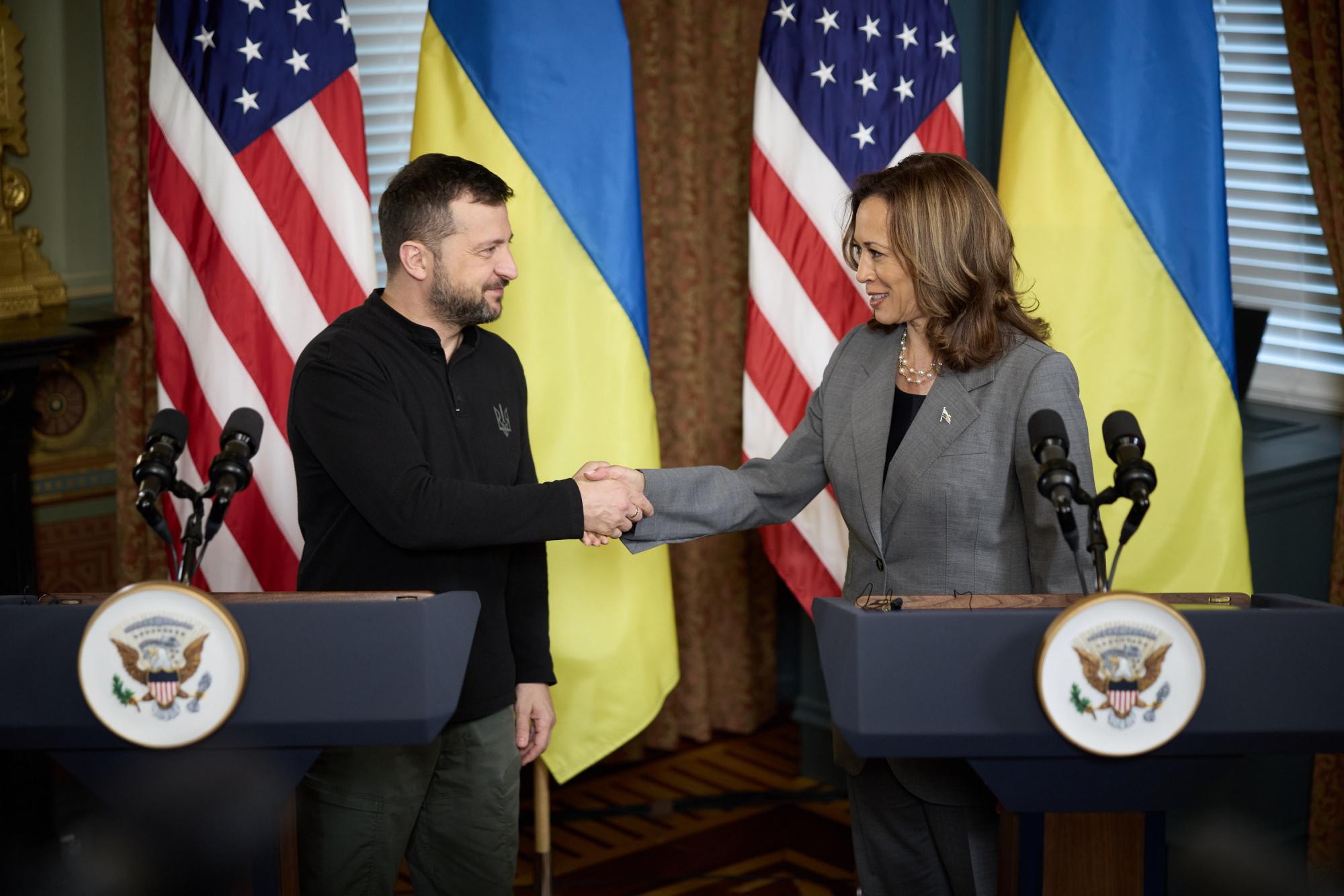
Volodymyr Zelenskyy and Kamala Harris (photo: Office of the President of Ukraine)
According to sources, there are so few ATACMS missiles that allowing strikes on Russia would deplete their stockpile within weeks or even days. Furthermore, Ukraine seems to want to target not only military facilities in Russia with Western long-range missiles but also energy-related infrastructure, including oil storage facilities. However, the US has regularly refused to provide Ukraine with coordinates for such targets.
Therefore, even after the personal meeting, Biden did not grant Zelenskyy's request for long-range strikes.
"As for weapons support, yes, it exists. However, the decision regarding long-range weapons is still pending, partly because such actions are considered escalatory. It seems that after long-range weapons, the only thing left would be intercontinental ballistic missiles, but we don’t need those," said diplomat and extraordinary and plenipotentiary ambassador Andriy Veselovsky in a comment to the RBC-Ukraine.
At the same time, President Biden announced additional military aid and new air defense systems. Among other things, Ukraine will receive a new category of weapons — long-range Joint Standoff Weapon (JSOW) bombs. These munitions can be launched from F-16 fighter jets and have folding wings that allow them to hit targets at distances of over 100 km. There are several versions of the JSOW, but it is known that Ukraine will receive a variant with cluster munitions. More details about their characteristics can be found in RBC-Ukraine's article.
Additionally, Biden announced the allocation of nearly $8 billion to Ukraine. This sum includes funds that had not yet been used and could have expired with the end of the fiscal year on September 30. While the sum seems significant, this is more about technical nuances related to US budget law rather than political will. Moreover, the weapons will not be provided to Ukraine immediately but will be delivered in several batches over the coming months.
Meetings with Scholz and Modi
In addition to key figures in the US establishment, Zelenskyy had several other bilateral meetings.
Suddeutsche Zeitung notes that the conversation between German Chancellor Olaf Scholz and Zelenskyy lasted 34 minutes and was almost entirely private. According to the agency, Scholz seems in no rush to hear about Zelenskyy's victory plan. This is likely because the Chancellor essentially knows what the Ukrainian president wants. On the crucial issue for Ukraine — lifting restrictions on strikes deep into Russia using German weapons — Scholz holds a firm position and is not willing to lift such a ban. This stance is partly due to Germany’s upcoming parliamentary elections next year, as Scholz does not want to appear, in the eyes of voters, as someone who escalates the conflict.
Similarly, the meeting between President Zelenskyy and Indian Prime Minister Narendra Modi appeared formal. The two leaders spoke after the QUAD summit (US, Japan, Australia, and India) — a group of countries Washington is trying to rally against China. However, as highlighted by the Indian agency The Hindu, the leaders of Ukraine and India discussed many issues raised during Modi's recent visit to Ukraine, although Zelenskyy did not address the issue of India's oil imports from Russia. RBC-Ukraine previously reported that a key part of the victory plan is working with the Global South to increase Russia's isolation and attract as many countries as possible to Ukraine.
According to Politico, Ukraine sees Modi as a suitable mediator for ending the war. A senior Ukrainian official, speaking anonymously to the agency, confirmed that India is a major hope for Kyiv in negotiating an acceptable peace deal.
Victory plan for Trump
This aspect of the visit was perhaps the most problematic. Initially, Trump’s team had agreed to a meeting with Zelenskyy. According to Time, the parties discussed holding it at Trump’s Mar-a-Lago residence, but Ukrainian negotiators suggested that this could be perceived as election interference and proposed a more neutral location. In the end, Trump refused the meeting entirely and raised a new wave of criticism toward Ukraine.
RBC-Ukraine reported that it appears that Trump's team, at the last moment, decided to use Zelenskyy as a convenient target for criticism to gain additional electoral points. For this, Republicans began amplifying the narrative of alleged Ukrainian interference in US elections — this time on the side of Biden-Harris —especially since during the visit, Zelenskyy criticized Trump-Vance's plan for Ukraine and visited an arms factory in the battleground state of Pennsylvania.
Such accusations are very strained, notes Olena Halushka, head of the International Center for Ukrainian Victory, in a comment to RBC-Ukraine.
"In reality, there is a lot of criticism from the Ukrainian government directed at President Biden and his indecisiveness. So, I wouldn’t say that President Zelenskyy’s criticism is one-sided. The president went there with a victory plan, and he is rallying support for that plan. And for this, we need bipartisan support. We must understand that the US is in a very heated pre-election period, and we need to be extremely cautious," Halushka told RBC-Ukraine.
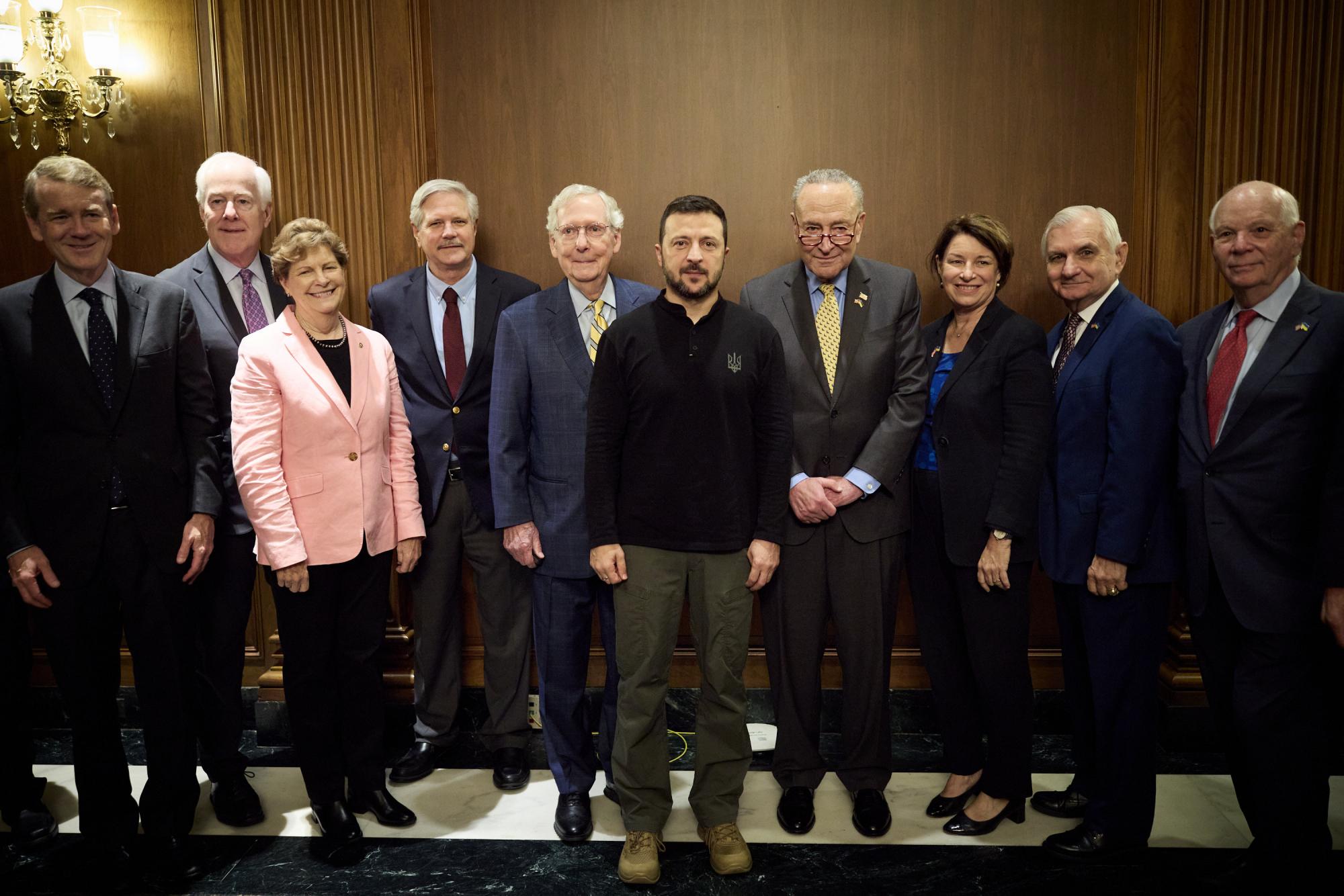
Volodymyr Zelenskyy and US congressmen (photo: Office of the President of Ukraine)
Nevertheless, the Ukrainian delegation managed to partially turn the situation around. Some Republicans remain supportive of Ukraine despite Trump’s stance. Evidence of this is Zelenskyy’s meeting with members of the US Congress from both parties, during which he also presented them with his victory plan. Attendees included Democrat Senate Majority Leader Chuck Schumer and Republican Minority Leader Mitch McConnell.
In the end, Trump unexpectedly announced that he would meet with the Ukrainian leader, but on his terms — in New York at Trump Tower. Voice of America, citing its sources, speculates that Zelenskyy might extend his visit by a day for this meeting. The reasons for Trump’s change of heart are unclear for now. However, whatever the conversation between the two leaders may be, it is unlikely to change anything. Trump has his own plan to end the war, the core of which he recently outlined publicly: for Kyiv to agree to a deal with the aggressors on any, even the worst, terms. Under such circumstances, it will be extremely difficult for Zelenskyy to interest Trump in his victory plan.
Sources: the materials from The New York Times, The Washington Post, Time, Bloomberg, The Wall Street Journal, Voice of America, and comments from Olena Halushka, head of the International Center for Ukrainian Victory, and diplomat Andriy Veselovsky, extraordinary and plenipotentiary ambassador.
